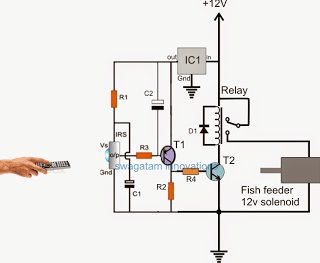In this design a solenoid is operated using an IR remote control, which in turn toggles the fish feeder mechanism.
In this article I have explained how to make a simple infrared controlled fish feeder circuit. The idea was requested by Mr. Harishvar.
Technical Specifications
I just want a circuit which should turn on when i press and hold a key from my remote. my use is: i have a motor as a vibrator and i have fixed it near my aquarium tank.
i just want to trigger the motor whenever i press a key from a particular remote i.e. if i press a key and hold it the motor should be on and as soon as i release the key the motor should be off, actually i have attached the motor to a container containing fish food.
if i press the remote the motor should be on due to which the container will vibrate and food will fall into the tank and as soon a s i leave the button the motor should be off.
this is the main aim of circuit....and also sir the motor should be triggered only with a particular kind of remote...so plzz design a circuit for the
remote also...the motor should not be triggered with any other remote, instead it should be triggered only with the unique remote that you should design, so please give the circuit as soon as possible....thank you
I just want a remote and a receiver, if i press the button on the remote the receiver should trigger the motor as long as i keep the button pressed, you may take the range any value.
if i sit on my sofa and operate, it should operate. My sofa and my aquarium tank has about the distance of 5 meters so do it anyway you want.
i just want the circuit to be working that's all and also sir plxx make use of the components that are easily available and plzz make it as simple as possible....
The Design
The following diagram shows the basic circuit layout for the proposed remote controlled fish feeder circuit.
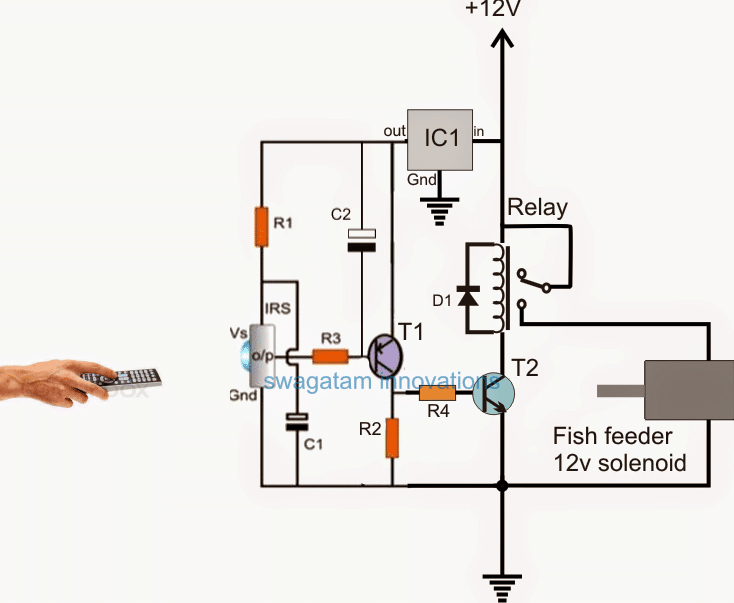
A rough Simulation of the above requested circuit can be witnessed below:
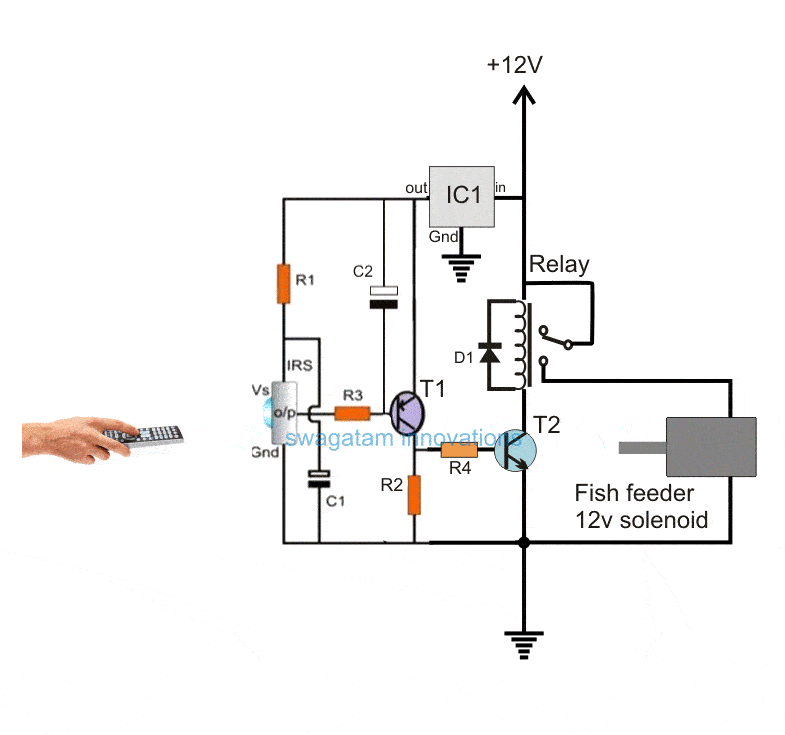
The above presented simulation of the proposed remote controlled fish feeder circuit can be realized with the help of the following points:
For ensuring 100% safety to the solenoid and the circuit, it is recommended to add a 1000uF capacitor network at the collector of the relay driver transistor. This will ensure that the relay never stays ON for more than a second, and thus prevent overloading of the solenoid.
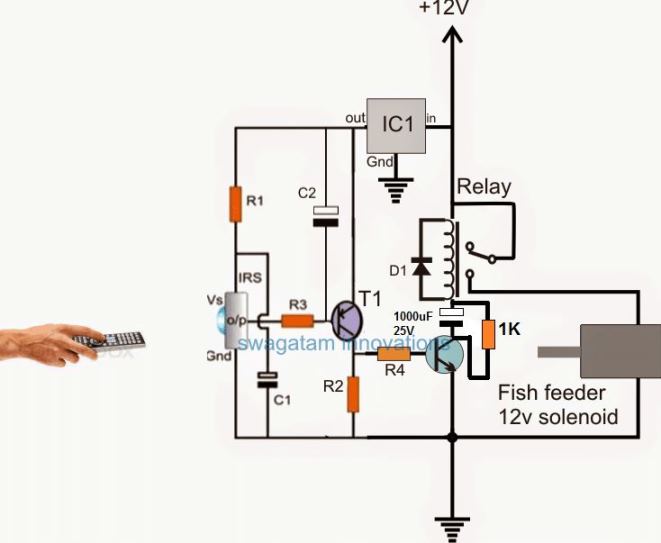
Video Demo
Circuit Operation
As soon as the infrared signal from the remote handset is pressed, the IR signals reach and hit the IR sensor TSOP1738, and causes it to produce a low across its output/ground pinouts.
This low or negative signal enables T1 to conduct causing a positive pulse to flow to the base of T2, which in turn conducts and switches ON the relay.
The relay contacts can be seen wired with the desired fish feeder mechanism through possibly a DC 12V solenoid, as indicated in the above simulation.
Therefore whenever the remote handset is toggled, the relay and the fish feeder mechanism also respond accordingly, and stay activated until the input signal is cut off or the remote handset is switched OFF.
The design can be used in fish aquariums for implementing a remote fish feeding operation without the need of practically moving near the fish aquarium.
Parts List for the above circuit
- R1 = 100 ohms
- R3, R4 = 10K
- R2 = 1K (please replace this with a 100uF capacitor for improved response)
- T1 = BC557
- T2= BC547
- Relay = 12V SPDT
- C1, C2 = 10uF/25V
- IC1 = 7805
- IRS = TSOP1738
Although the above design might look extremely easy to build and use, it has a drawback. The circuit can be operated using any standard IR remote handset, while in the request a uniquely operated Rx, Tx could be seen proposed.
In order to achieve a unique IR remote control sets, the above design needs to be upgraded to a rather sophisticated tuned IR remote control system.
The diagram for the same may be studied below:
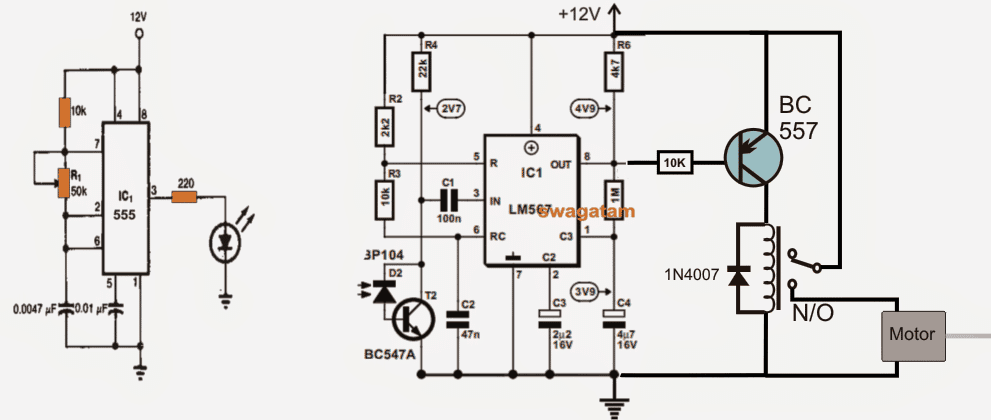
A detailed explanation of the concept may be read in the article titled Tuned infrared detector modules.
The article details the entire functioning of the relevant components used in the design and also regarding how to set up the modules in order to make them uniquely compatible with each other.
